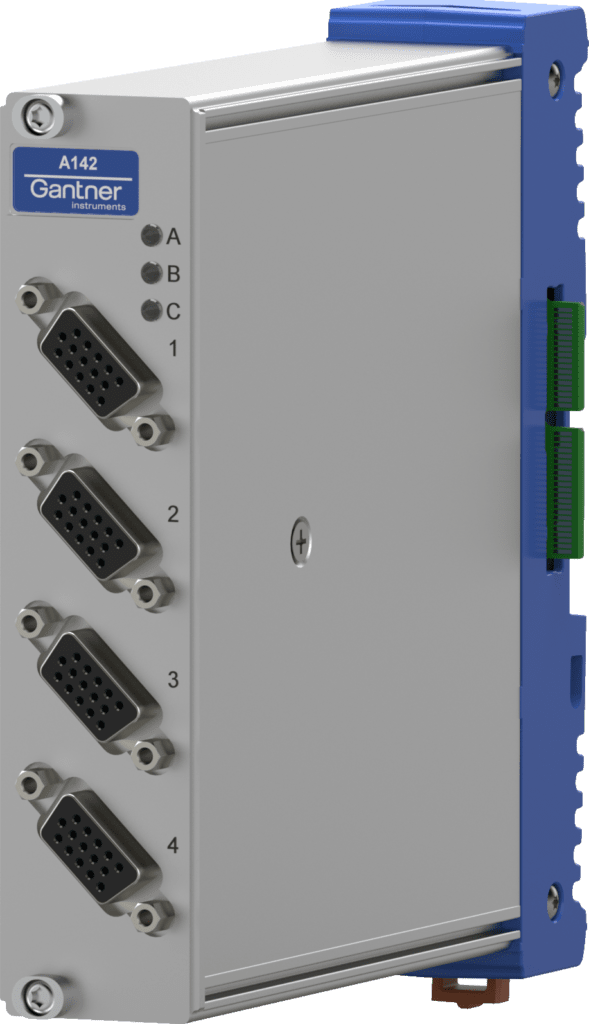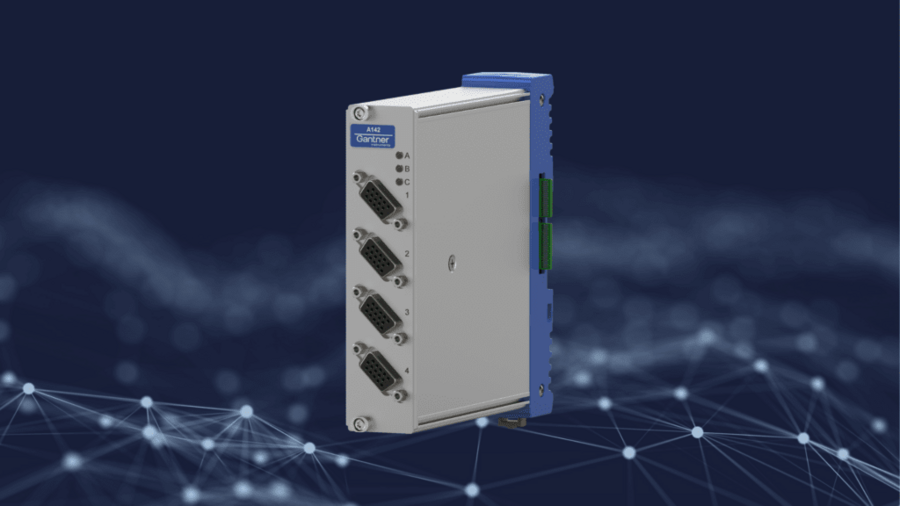You can acquire data and control your testing operations with Q.series X systems. With the introduction of our new Q.series X A142, we have extended our capabilities for force and motion control applications. The Q.series X A142 is a universal input and output module designed with closed-loop control applications in the field of automotive, aerospace, and mechanical testing in mind. It features all sensor interfaces typically found on a hydraulic, pneumatic, or electric test actuator. By combining with an onboard 10 VDC analog output and test.con’s PID controller functionality, you can turn your Q.series X system into an integrated data acquisition and control solution for any force or motion control application.
The A142 comes with three 18-Bit, 20 kHz analog inputs (SAR ADC). You can use two inputs for LVDT/RVDT sensors or strain gage-based transducers, allowing you to use dual-bridge load cells for critical force control applications. The third analog input is a 10 VDC voltage input that can be freely configured for, for example, a potentiometric sensor or an external function generator as input for the PID controller. An additional Synchronous Serial Interface (SSI) makes the A142 unique. SSI is a point-to-point serial communication standard for digital data transmission between a master and a slave. SSI is commonly used with absolute encoders, as well as with Temposonics position sensors from MTS Sensors.
What is SAR ADC?
The method of Successive Approximation Register (SAR) is a method used in A/D converters for converting the analog signal into a digital signal. It is based on the comparison of the analog input voltage with a reference voltage. In successive approximation, the comparison is made step by step and is repeated continuously, whereby the reference voltage is changed so that it increasingly approaches the input voltage. Unlike a sigma-delta ADC, the SAR architecture does not have latency. The relatively high sample rate and zero-latency make the SAR ADC suitable for closed-loop control applications.
Key Features:

- 2 Analog inputs for strain gage transducers or LVDT/RVDT sensors
- 1 Synchronous Serial Interface (SSI)
- 1 10 VDC analog input
- 1 10 VDC analog output
- 4 Digital inputs and outputs
- 20 kHz update rate
- Low-latency 18-Bit SAR ADC
- 500 VDC galvanic isolation for all analog inputs
- Onboard virtual channels for scaling, filtering, and calculations
- Available in Q.bloxx X, Q.brixx X or Q.raxx X packaging
- Optionally as EtherCAT slave module (XE version)
- 15 Pin standard D-sub connectors
Read more about our Q.series X Data Acquisition System here.
More articles
GI.bench is OUT!
We continue to improve our GI.bench data acquisition software with a strong focus on making it a scalable platform that is easy to use for both small high-speed measurement and high-channel-count, mixed-signal data acquisition applications.
Read more...Q.bloxx A105 CR Cryo Module with Extended Range
Cryo Technology is a rapidly growing market and therefore more and more new sensor kinds appear. A clear trend is that these cryogenic temperature sensors move to higher resistance. With Gantner’s cryo module – the Q.bloxx A105 CR – a measurement range of up to 25kohms is now possible. The module is available as standard DIN rail module, or as Q.brixx/Q.raxx with 4 times 4-pole-LEMO (ERA.1S.304.CLL).
Read more...Introducing the Q.series X A12x 1500V Plus Versions
Gantner Instruments expanded the A12x module lineup with Plus versions (e.g., Q.series X A128 Plus SEB) that feature an increase in their voltage capacity up to 1500V, meeting the evolving demands of industries that require higher voltage limits for testing and measurement. Let's delve deeper into the enhanced capabilities of the A12x module lineup and how they empower engineers across various industries.
Read more...“Lunch and Learn” at EDF
In a very good atmosphere 18 specialists of EDF Energy Generation in Gloucester/UK listen the presentations from engineers of Gantner Instruments at the Lunch and Learn Meeting and enjoy sandwiches, chips, cookies and soft drinks as well as coffee and tea.
Read more...